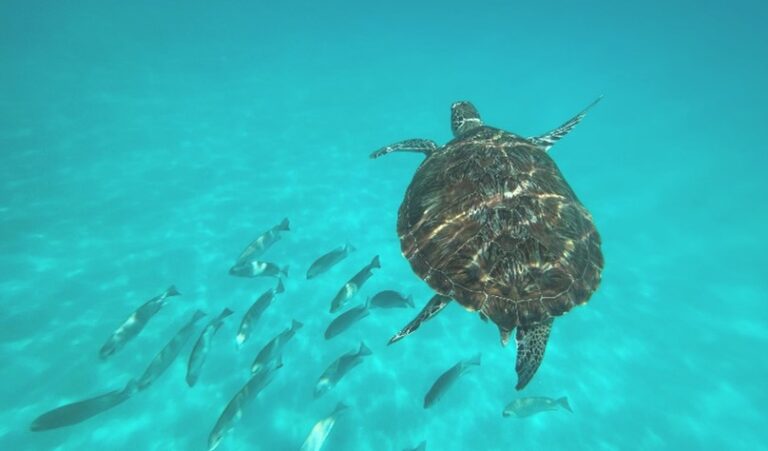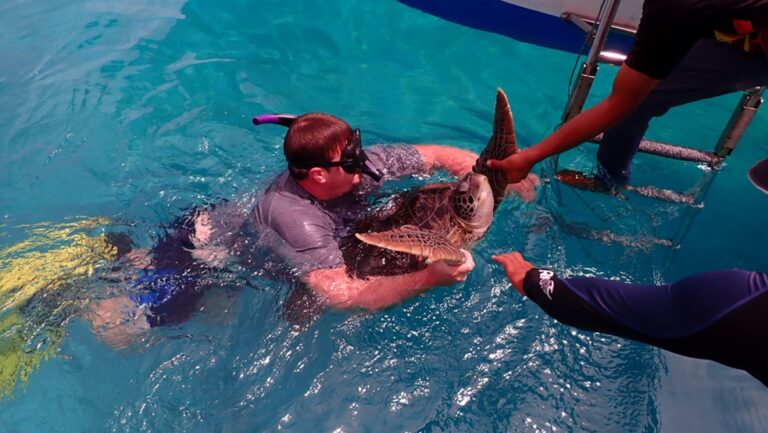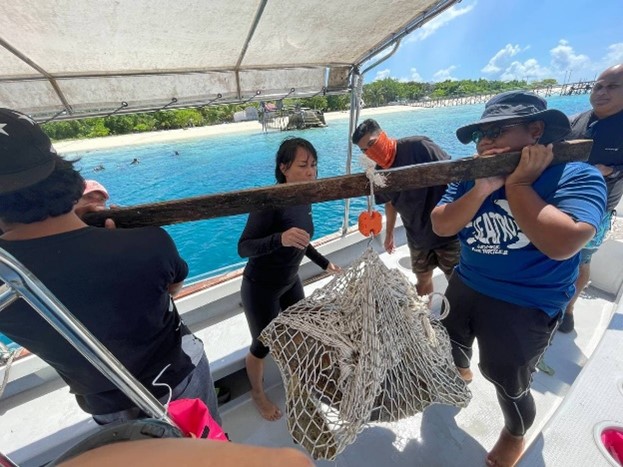Written by: Syamsyahidah Samsol (SEATRU)
One of the places offering interactions with wildlife is located on the East Coast of Malaysia, Terengganu, which is famously known for sea turtles landing and nesting beaches in Peninsular Malaysia. Terengganu is more accessible to the public with sea turtle watching activities which intrigue local and international tourists to experience once-in-a-lifetime interaction with the sea turtles.
The tourism industry contributes significantly to Malaysia’s economic growth due to the abundance of marine resources at beaches and islands that act as the key attractions for Malaysia’s coastal recreation tourism (UNTWO, 2018).
Terengganu Turtle Tourism is an ecotourism concept that utilises natural areas to protect environmental resources, preserve biodiversity, and improve local communities’ livelihood. Sea turtles are attractive in photogenic ways and relatively human-safe, and their predictable behaviours add credibility as a tourist attraction.
The sea turtles’ life cycle is enigmatic, complex, and perplexing to humans to extent of enticing even those who has not been exposed to the natural environmental values. Hence, many are intrigued and interested in having close interactionsl with the iconic animal that makes Terengganu Turtle Tourism a popular and growing tourist activity.
Since the International Union for the Conservation of Nature (IUCN) has classified six out of seven sea turtle species as endangered or critically endangered globally in its IUCN Red List of Threatened Species, turtle-related tourism should be the nation’s topmost priority in sustaining ecotourism.
Despite the Terengganu Turtle Tourism helps inflate the local economy tremendously, there are significant threats caused by the interactions of the tourists with the sea turtles that are significantly harmful to the animals. Examples are riding or feeding turtles, disturbance while snorkelling that caused habitat loss and severe injuries due to boat strikes.
Due to these concerning issues, the Sea Turtle Research Unit (SEATRU) of INOS, UMT, has taken the initiative to start assessing the health conditions of the sea turtles roaming Teluk Dalam, located on the northeast of Pulau Redang. This area has been determined as one of the hotspots for swimming, snorkelling and even turtle feeding for the tourist.
The research activities involve sea turtle capture by rodeo technique, basic external assessment, barnacle removal, weighing and size of body measurements, and blood withdrawal for the health analysis. This initiative also aims to stimulate environmental awareness among tourists and economic growth of the locals while achieving SDG14 – life under water.




Copyright © INOS | Institute of Oceanography and Environment | Universiti Malaysia Terenganu | 2024. All rights reserved.